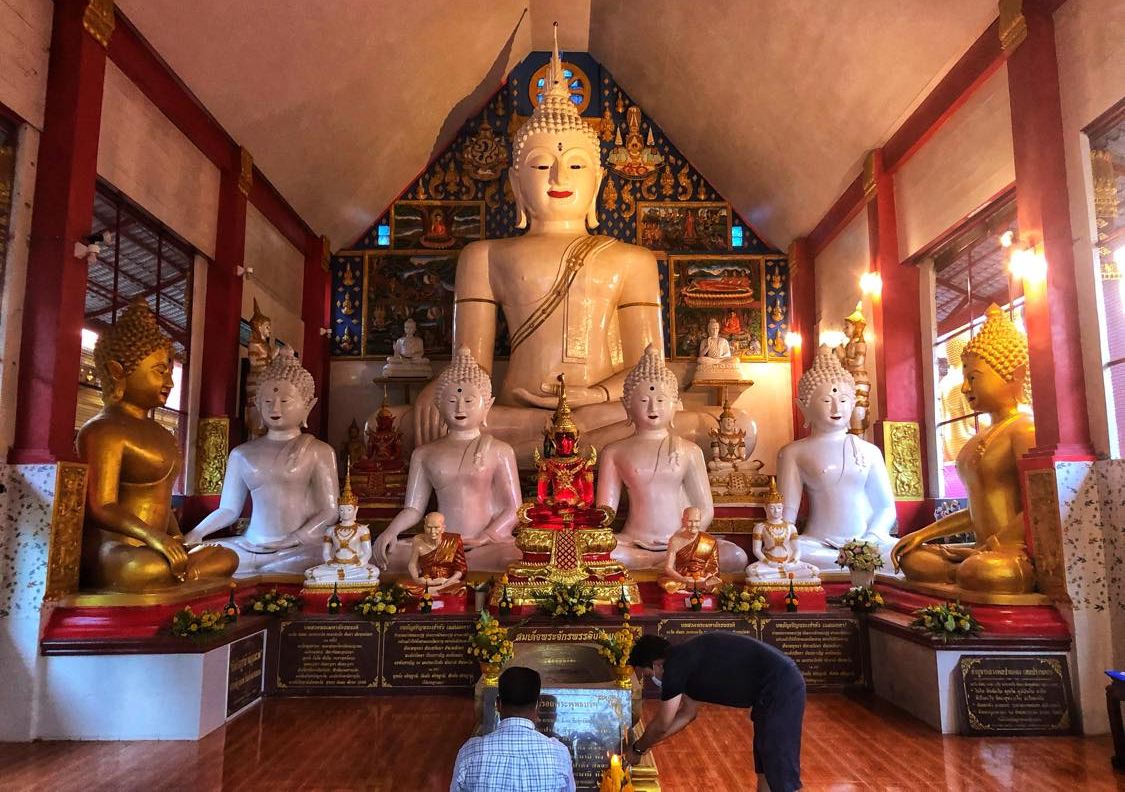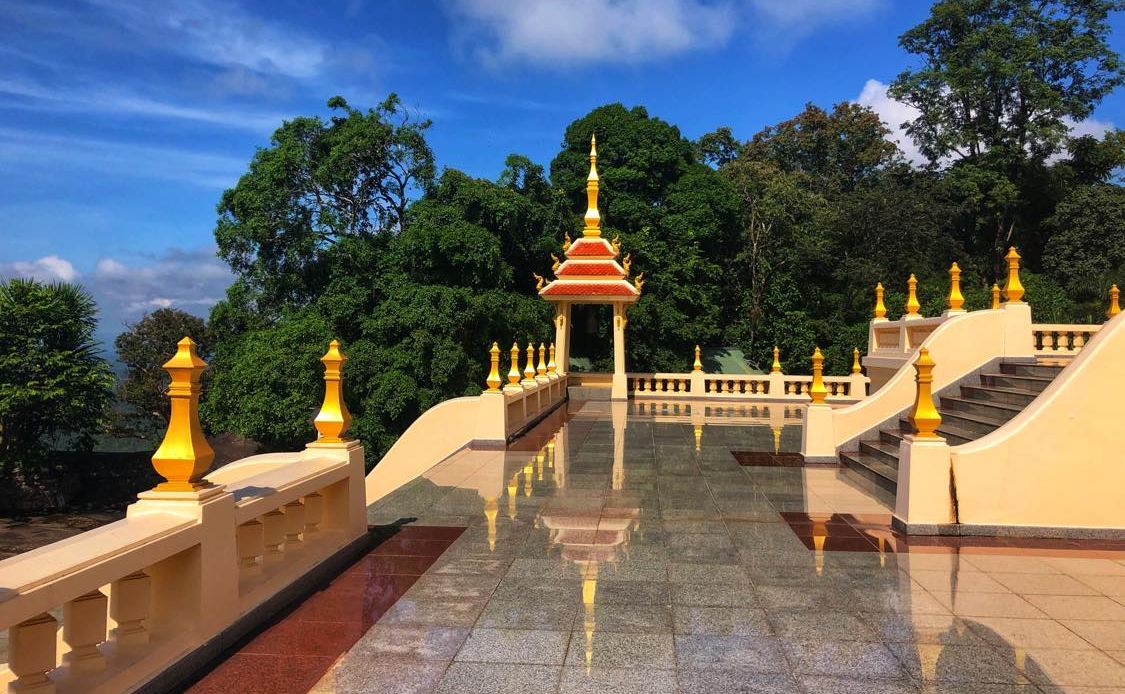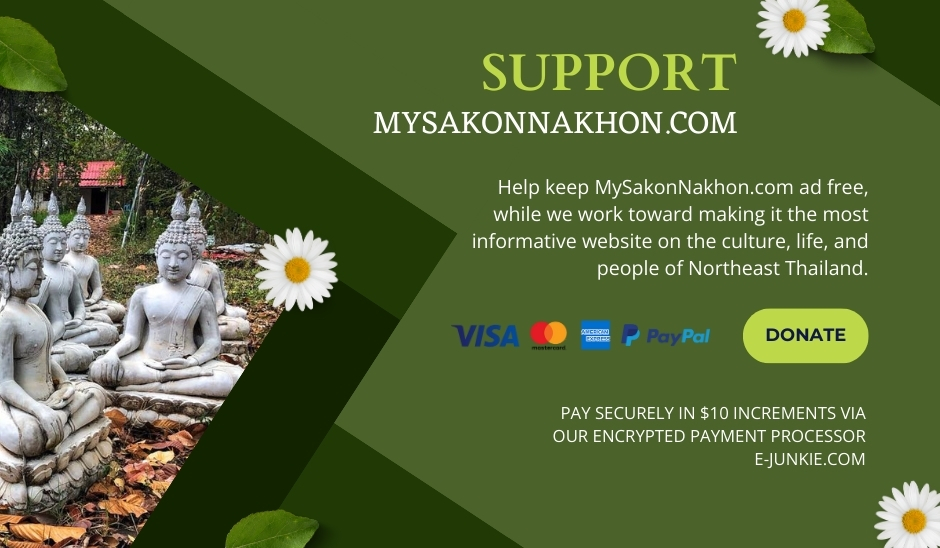
Dress Code for Temples in Thailand

The dress code for temples in Thailand can be summed up in four words: “Dress comfortably but conservatively.” There are no hard and fast rules that cover all Thai temples, and enforcement varies greatly, but you rarely can go wrong if you follow the comfortable but conservative code — along with easy to slip off sandals, since footwear isn’t allowed inside.
One exception to this general dress code is the Wat Pho temple in Bangkok, which has very strict and highly enforced rules regarding dress, including that men must wear long pants, and women must wear skirts that cover their knees and tops that cover their shoulders and chest.
The reason tourists wish for a relaxed dress code at Thai temples is that they are under the impression that the more skin they are allowed to show, the cooler and more comfortable they will be. However, wearing tank tops, spaghetti strap tops, and short skirts aren’t the way to stay cool in Thailand.
Just have a look at the Thai people themselves, who know best how to stay cool and comfortable. You won’t see Thai women wearing halter tops or Thai men wearing muscle shirts when out in the sun. The reason for this isn’t simply that the Thai people are more conservative than Westerners and prefer fair skin to a suntan. The reason is that such attire will make you hotter!
Studies have shown that loose-fitting long and short sleeve shirts, made of breathable fabrics like cotton, linen, or rayon, and light-colored, will keep you cooler than wearing tops that expose more of your skin. In addition, it is a healthier choice, as this style of clothing protects you from harmful UV rays. The same thing goes for a sundress versus wearing a short skirt.
There are, of course, a few items which would break the dress code for every temple in Thailand, no matter which one you are visiting. These include bathing suits, bikini tops, miniskirts, and short shorts.
You might think these are so obviously dress code breakers that they don’t need to be mentioned, but every year the news reports on a tourist wearing utterly inappropriate clothing at a Thai temple — sometimes to create a salacious or “funny” video for social media. In fact, several years ago a couple of Americans got tossed in jail for exposing their butts at a Thai temple, so they could post a “funny” photo on Instagram. There is nothing funny about a Thai prison, or offending your Thai hosts, so do follow the “dress conservatively but comfortably” dress code for temples in Thailand.

As we mentioned at the start, it’s best to wear sandals when visiting a temple, because they are easy to slide on and off. You will need to take off your shoes when going inside a temple building and when climbing steps to reach a sacred shrine, statue, or pagoda.
At famous Bangkok temples like Wat Pho and Wat Arun, you’ll see signs in English instructing you to take off your shoes, but at temples off the beaten tourist track in Thailand, these signs are usually only in Thai. So, you’ll want to remember that the sign ถอดรองเท้า means take off your shoes.
Another thing to know regarding the dress code for temples in Thailand is the best reason to follow the code, even if you can away with dressing less conservatively than required. Many tourists are simply concerned about whether they will be allowed inside a temple or not, wondering how far they can push the envelope and still be allowed to enter. But that shouldn’t be your main concern, especially when visiting Thai temples off the beaten tourist path.
You don’t want to simply be allowed inside a Thai temple. You want your visit to be embraced by the temple’s monks, and the Buddhist lay people who may be there. You want to be greeted with a smile, and (as often happens) enjoy some Thai hospitality. When you are dressed very conservatively but still comfortably, the chances of this occurring increase exponentially.
We have been enthusiastically greeted many times at temples in the Northeast of Thailand, while being offered water, fruit juices, and fresh fruit like bananas, mangoes, and pineapple. One of the main reasons for this is that we were following a dress code that showed our respect for the temple.
Thailand is filled with gorgeous temples that receive very few tourists (even among Thais), and serve largely only their village. So, when they do receive an appropriately dressed visitor, especially a foreigner, they often are quite delighted to show you their temple and will enthusiastically welcome your visit.
Lastly, when approached by a monk at a temple, the appropriate Thai greeting is not the usual Sawat Dee Khrap/Kha, but rather the word Sah-too (สาธุ), which is an expression of respect that is reserved exclusively for monks in Thailand.
- The Hidden Dharma of Thai Language & Culture - May 11, 2024
- The Royal Ploughing Ceremony in Thailand – A History - May 8, 2024
- Dying Well the Buddhist Way in Thailand - May 7, 2024




